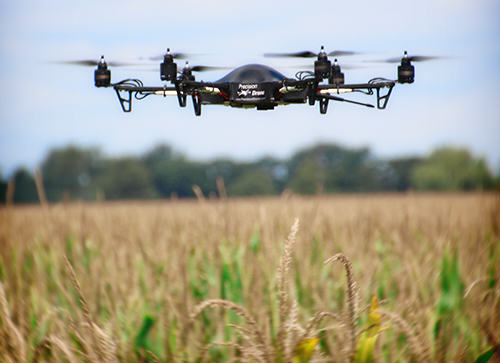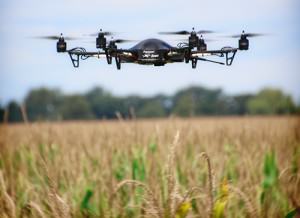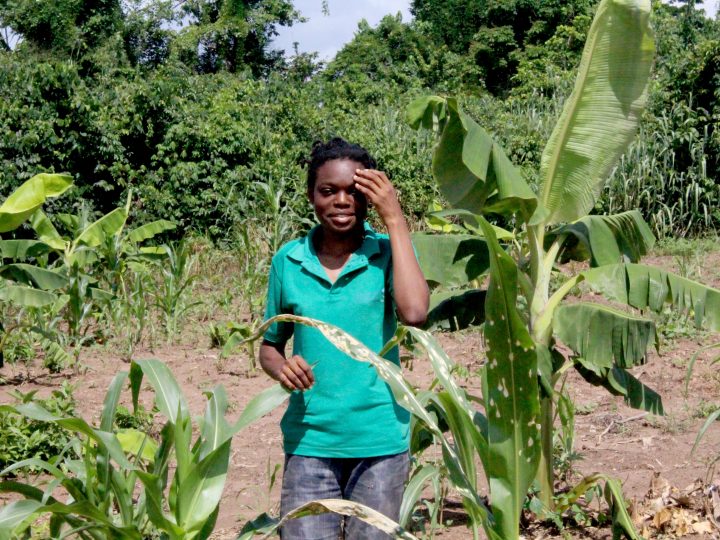
While the military use of drones is getting off the ground, the manufacturers involved in this industry are looking for other options: this is why agriculture is at the peak of everyone´s list!
Companies of this field have to have a remarkable set of skills and know-how: besides a solid expertise in agriculture and aviation, they need knowledgeable professionals in wireless communications, image sensors, photonics, photoreceptors, illumination sciences and much more state-of-the-art disciplines.
Nowadays, agriculture changed dramatically its appearance into an hi-tech based enterprise that most of the farmers of the former century could barely recognize, as well. If we look back just one century ago, agriculture slowly shifted from animal-powered to combustion engines and modern vehicles. Anyhow, in the last two decades, Global Positioning Systems and the astonishing technology´s development pushed the limit of farming even further towards a kind of technological wonderland, indeed. The ultimate goal of this highly sophisticated system is to optimization of modern agriculture, both on economic and environmental viewpoint. By now it´s crucial to apply the very right amount of any input (workforce, water, fertilizer, pesticide, fuel) in order to bring forward a sustainable and green agriculture, thereby it´s necessary to have a glaring understanding of the quantity of ingredients that is needed in order to effectively achieve a good crop yield.
As far as we know GPS devices are capable to provide accurate and top-notch information basically everywhere you are on earth´s surface. So farming machines equipped with GPS receivers can recognize anytime their location within a field and work on to maximize productivity and effectiveness on the spot. The most insightful example is about soil fertility: farmers can leverage on GPS systems to locate some soil samples, pass them to a lab for an in-depth analysis and, eventually, create a fertility map of the territory. This is a priceless upside for any potential farmer with a view to max out their harvest and save as much raw material as possible: according to the available data , farmers can prescribe and utilize a very specific amount of fertilizer for each sampled field location. The agricultural life-cycle become thus spot-on, money-saver and eco-friendly.
Precision agriculture requires exactly three must-have characteristics to be striking.
1- Site-specific information are really essential in order for the soil-fertility mapping to be exhaustive and spotless.
2- Decision-making is also quite demanding, in order to fully realize how to proceed and how to read the accumulated data. This tricky process can be supported by computer models capable to mathematically analyze the tight relation between soil fertility and potential yield´s rate of the field.
3- Needless to say that farmers must have the physical tools to bring to action the management decisions. Another example of precision agriculture regards the variation of the rate of planting seeds according to the soil type and using sensors to identify weeds, insects, diseases so that pesticides can be used uniquely where needed.
Site-specific information might be extremely useful for farmers: it includes not just soil condition´s map but even eye-bird pictures to observe the crop´s health across the fields. Unmanned aerial devices have become critical to gather data about both the crop and the field characteristics. Just for an instance, those images are very often used as a means to spot the presence of cotton root rot, a threatening soilborne fungal disease. Once disease has been identified, a proper and restricted treatment can be applied just to the areas where the fields have been hugely affected. Unmanned aerial vehicles (UAV) is a valuable option for farmers: it´s a low cost solution per flight and image details, albeit the legal framework is still on-going and has to be defined yet. Nevertheless, this example exemplifies the essential prevention role of drones in agriculture.
Automatic guidance and robotic field machines, whereas a GPS-based systems leads tractors towards much more accurate pattern than human drivers, have begun to be deployed even in small-scaled profitable agriculture such nursery plants, wine grapes and some fruits and vegetables cultivations. On the other hand automated machines can take people over performing burdensome tasks such as seeds planting and hand-harvesting vegetables, by relying on state-of-the-art sensor technologies. Japan, as a benchmark in high-technology and robotics, is the leading trend-setter in this field, as well. However, automated machines are becoming increasingly popular in th Usa too, mostly in California whereas the widest share of country´s crops are grown. Additionally the stunning advancement of flying robots technology allows that most of the field-crop scouting to be carried out by UAVs equipped with hand-like grippers rather than farmers, indeed.
Another arising kind of precision agriculture is the so-called HTP: high-throughput phenotyping. A blended mix of genetics, robotics and sensors sciences. HTTP is prominently used to evaluate physical features of the plants as height, size, leaf numbers, shape, color, wilting, capacity to generate fruits. This technology is primarily used to improve the quality and peculiarities of the plants such as nutritive contents, resistance to pesticides and to hostile weather phenomena. Sensor combinations is really powerful and can measure very swiftly phenotypic traits on countless kind of plant on regular basis, enabling scientists and genetics to decide which plants to include or not in further testing and, ultimately, dramatically quicken the researches on crops and plants.
All in all agriculture production is moving farther at a very astonishing pace, so that it´s really unlikely to predict how it look like in ten years. The technology innovation seems to be relentless and no one should be surprised if in ten years the overwhelming majority of crops and harvest around the globe would be managed by flying small helicopters, robotic grippers and cameras overlooking gigantic fields with no human being in full sight! But all of this should be done in accordance with the preservation of the workforce and with the strict purpose to alleviate unbearable living conditions in the fields.
Article from: http://corporate.wivela.com/2015/09/14/how-drones-are-pushing-further-the-agriculture-potential/





